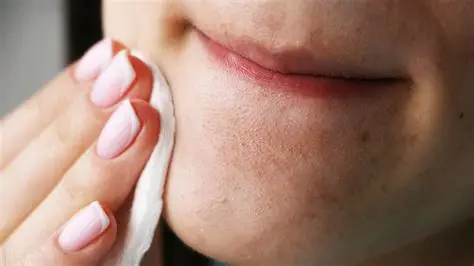Blackheads and whiteheads are common forms of acne. They form when hair follicles on the skin become clogged with dead skin cells and oil (sebum). Blackheads, also known as open comedones, appear black because the clogged pore is open to the air, causing the trapped oil and dead skin to oxidize and darken. Whiteheads, or closed comedones, are small, flesh-colored bumps that occur when the pore is completely blocked, preventing the contents from being exposed to air.
While they can be frustrating, there are several ways to manage and remove them. This guide will cover both home care strategies and when to seek professional help.
Understanding the Cause
Both blackheads and whiteheads result from clogged pores. Factors that contribute to this include:
- Excess Sebum Production: Your skin naturally produces oil (sebum). Too much sebum can lead to blockages.
- Dead Skin Cell Buildup: Old skin cells that don’t shed properly can mix with sebum and plug pores.
- Hormonal Changes: Fluctuations in hormones, especially during puberty, menstruation, or pregnancy, can increase oil production.
- Certain Medications: Some drugs, like corticosteroids, can worsen acne.
- Genetics: If your parents had oily skin or acne, you might be more prone to it.
- Cosmetics: Comedogenic (pore-clogging) makeup and skincare products can contribute to the problem.
Home Care Methods for Removing Blackheads and Whiteheads
Several approaches can help clear and prevent blackheads and whiteheads at home. Consistency is key for good results.
Method 1: Proper Cleansing and Exfoliation
Regular and gentle cleansing helps remove excess oil and dead skin cells, preventing clogs.
- Cleanse Twice Daily:
- Use a gentle cleanser designed for acne-prone or oily skin. Look for products that are non-comedogenic.
- Wash your face twice a day – once in the morning and once before bed.
- Use lukewarm water and gently massage the cleanser onto your face with your fingertips for about 30-60 seconds.
- Rinse thoroughly and pat your face dry with a clean towel. Avoid harsh scrubbing, which can irritate the skin and worsen breakouts.
- Chemical Exfoliants:
- Instead of harsh physical scrubs, which can irritate inflamed skin, use chemical exfoliants. These ingredients help shed dead skin cells and keep pores clear.
- Salicylic Acid (BHA): This is highly effective for blackheads and whiteheads. It’s oil-soluble, meaning it can penetrate oil and exfoliate inside the pore. Look for cleansers, toners, or serums with 0.5% to 2% salicylic acid.
- How to use: Start by using products containing salicylic acid 2-3 times a week, gradually increasing frequency if your skin tolerates it. Apply after cleansing.
- Glycolic Acid (AHA): While primarily for surface exfoliation and improving skin texture, AHAs can also help prevent clogs by shedding dead skin cells on the skin’s surface. They are water-soluble.
- How to use: Introduce gradually, perhaps 2-3 times a week, often found in toners or serums.
Method 2: Topical Treatments
Specific topical ingredients can directly target blackheads and whiteheads.
- Retinoids (Vitamin A derivatives):
- Over-the-counter (OTC) retinoids: Adapalene (e.g., Differin Gel) is now available OTC. It works by normalizing skin cell turnover and preventing dead cells from clogging pores.
- How to use: Apply a pea-sized amount to clean, dry skin in the evening. Start with every other night to allow your skin to adjust, as retinoids can cause initial dryness, redness, or peeling. Always use sunscreen during the day when using retinoids.
- Prescription retinoids: For more stubborn cases, a dermatologist can prescribe stronger retinoids like tretinoin or tazarotene.
- Benzoyl Peroxide:
- While more commonly known for treating inflammatory acne (pimples with pus), benzoyl peroxide also helps by reducing acne-causing bacteria and shedding dead skin cells.
- How to use: Available in various strengths (2.5% to 10%) in cleansers, creams, or gels. Apply once or twice daily to affected areas. Start with a lower strength to minimize irritation.
Method 3: Clay Masks and Charcoal Masks
These masks can help draw out impurities and absorb excess oil from the skin.
- Clay Masks:
- Bentonite clay or kaolin clay masks can absorb excess oil and impurities, helping to decongest pores.
- How to use: Apply a thin layer to clean skin, leave on for 10-15 minutes (or as directed), and rinse thoroughly with lukewarm water. Use 1-2 times a week.
- Charcoal Masks:
- Activated charcoal is known for its ability to bind to toxins and impurities.
- How to use: Apply as directed on the product, usually 1-2 times a week. Be cautious with “peel-off” charcoal masks, as they can be too harsh and cause skin irritation or damage, especially if used frequently.
Method 4: Pore Strips (Use with Caution)
Pore strips are adhesive strips that can physically remove blackheads from the surface of the skin, particularly on the nose.
- How to use: Cleanse your skin, wet the area (usually the nose or chin), apply the strip, let it dry for the recommended time (typically 10-15 minutes), and then peel it off.
- Limitations: Pore strips only remove the very top part of the blackhead and do not prevent new ones from forming. They can also be irritating for sensitive skin. Use sparingly, no more than once a week.
Method 5: Steaming
Steaming helps to soften the top layer of the skin and loosen up the contents of the pores, making them easier to extract (if done safely).
- How to use: Lean over a bowl of hot water with a towel draped over your head for 5-10 minutes. Alternatively, use a facial steamer.
- Important: Steaming alone won’t remove blackheads or whiteheads. It simply prepares the skin for other treatments, like gentle exfoliation or, if done by a professional, extraction.
When to Seek Professional Help
While home remedies are effective for many, some blackheads and whiteheads might need professional intervention.
- Dermatologist Consultations:
- If your blackheads and whiteheads are widespread, persistent, or accompanied by more severe forms of acne (cysts, nodules), a dermatologist can provide stronger prescription treatments.
- They can also offer professional extraction services.
- Professional Extractions:
- A trained dermatologist or esthetician can perform professional extractions using sterilized tools. This involves using a comedone extractor to gently press out the contents of the clogged pore.
- Do NOT attempt to pick, squeeze, or use metal tools at home. Improper squeezing can push the contents deeper, cause inflammation, introduce bacteria, lead to scarring, or worsen the problem. Leave extractions to professionals.
- Other Professional Treatments:
- Microdermabrasion: A procedure that exfoliates the top layer of skin using a device with tiny crystals or a diamond tip. It helps remove dead skin cells and can improve skin texture.
- Chemical Peels: A dermatologist-administered chemical peel uses stronger acids to exfoliate the skin, helping to clear pores and reduce breakouts.
Prevention is Key
Preventing blackheads and whiteheads is often more effective than treating them once they appear.
- Maintain a Consistent Skincare Routine: Cleanse twice daily, and use a gentle exfoliant (like salicylic acid) regularly.
- Choose Non-Comedogenic Products: Look for labels like “non-comedogenic” or “non-acnegenic” on makeup, moisturizers, and sunscreens.
- Avoid Touching Your Face: Your hands can transfer oil and bacteria to your skin.
- Clean Pillowcases Regularly: Change pillowcases at least once a week to prevent oil and dead skin from building up.
- Shower After Sweating: If you exercise or sweat heavily, cleanse your face and body afterward to prevent pore clogs.
- Manage Stress: Stress can impact hormones, which can affect oil production.
By following these steps and being patient, you can significantly reduce blackheads and whiteheads and achieve clearer, healthier skin.
Frequently Asked Questions (FAQ)
Q1: What is the main difference between a blackhead and a whitehead?
A1: A blackhead (open comedone) is a clogged pore that is open to the air, causing the trapped oil and dead skin to oxidize and appear black. A whitehead (closed comedone) is a clogged pore that is completely closed off at the surface, appearing as a small, flesh-colored bump.
Q2: Can I squeeze blackheads and whiteheads at home?
A2: It is strongly advised not to squeeze or pick blackheads and whiteheads at home. Improper squeezing can push the contents deeper, lead to infection, cause inflammation, and result in permanent scarring or dark spots. Leave extractions to trained dermatologists or estheticians.
Q3: Which skincare ingredients are best for treating blackheads and whiteheads?
A3: Salicylic acid (BHA) is highly effective for dissolving oil within pores. Retinoids (like adapalene) help normalize skin cell turnover. Benzoyl peroxide can also help by reducing bacteria and promoting exfoliation.
Q4: How often should I use exfoliating products like salicylic acid?
A4: Start with 2-3 times a week, and if your skin tolerates it, you can gradually increase to once daily. Pay attention to your skin’s reaction to avoid irritation.
Q5: When should I see a dermatologist for blackheads and whiteheads?
A5: You should see a dermatologist if your blackheads and whiteheads are widespread, persistent despite home treatment, or if you also have more severe forms of acne like cysts or nodules. They can offer stronger prescription treatments and professional extractions.





